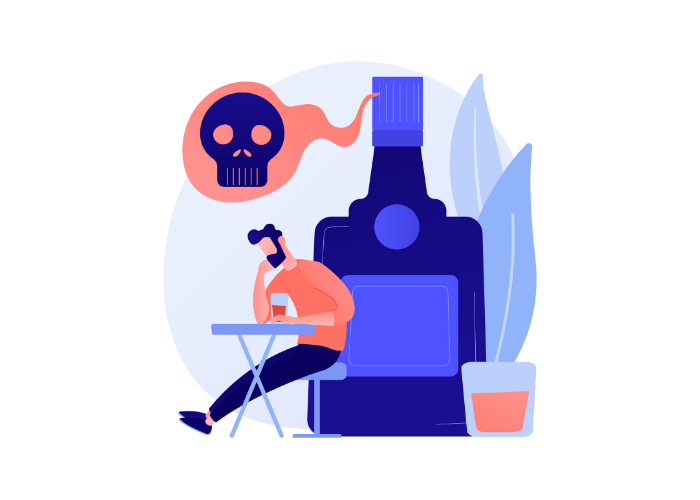
Understanding Substance Use Disorder
- Substance misusers have a damaged cognitive ability as well as disturbed behavioral habits.
- Changes in brain function lead to a desire for and craving for additional psychoactive substances.
- According to neuroimaging research, substance use disorders have a negative impact on the areas of the brain that control judgment, memory, decision-making, and behavioral control.
Knowing What Is a Substance?
A substance is a psychoactive compound that, due to its chronic and recurrent usage, has the potential to induce health problems and addiction.
These drugs could be legal, such as alcohol or cigarettes, or illicit, such as cannabis, cocaine, heroin, and controlled pharmaceuticals, such as codeine derivatives, which can only be consumed with the advice of licensed practitioners in the event of medical issues.
Substances are divided into seven categories based on their behavioral and psychological effects.
- Nicotine comes in a variety of forms, including cigarettes, cigars, chewable nicotine, vapor cigarettes, and snuff.
- Alcohol includes all forms of beer, wine, and refined alcohol.
- Marijuana, hashish, hash oil, and edible cannabinoids are all forms of cannabinoids. Cannabis is consumed by eating it, inhaling the vaporized form, and smoking it.
- Opioids are narcotics and painkillers derived from the opium plant or synthesized. Heroin, morphine, codeine, methadone, and oxycodone are examples of this class of medications.
- The depressant class, which includes benzodiazepines, barbiturates, and hypnotics, is a prescription medication. People frequently misuse them in order to achieve a sense of relaxation and avoid tension.
- Stimulants are a family of drugs that are frequently abused to increase energy and produce a euphoric sensation. Cocaine, amphetamine, methamphetamine, and methylphenidate are among them.
- Depending on the drug and concentration, hallucinogens can elicit a variety of signs and symptoms. Lysergic acid diethylamide (LSD) and phencyclidine (PCP) are the most well-known.
Recurrent substance use can alter the way the brain works. These alterations can remain long after the substance’s adverse reactions have worn off, or after the intoxication stage has ended.
The intense pleasure, euphoria, tranquility, enhanced perception and sense, and other experiences generated by the above-listed substances are known as intoxication. Each substance has its own set of intoxication symptoms.
DSM 5 Criteria For Substance Use Disorder
The following are some of the indications, symptoms, and behaviors linked with substance use disorder that is depicted in the Diagnostic and Statistical Manual of Mental Disorders, Fifth Edition (DSM 5):
- A person with substance use disorder becomes addicted to the drug and needs to take it daily if not many times a day
- Excessive need to get away from the stress, anxiety, and ideas that are bothering them
- Instead of quitting a substance, people with SUD begin taking it more frequently to have the same euphoric impact.
- Spending an outrageous amount of money on obtaining and consuming drugs
- Because of substance use disorder, they cannot satisfy their commitments and work responsibilities, as well as limit their social and leisure activities
- Inability to get rid of drugs and resorting to unlawful acts in order to obtain the required drug
- Experiencing withdrawal symptoms as a result of abruptly ceasing drug use
- Continuing to consume the substance despite knowing that it is giving them problems or harming their physical or mental health
DSM 5 Justification for Substance Use Disorder
Psychoactive active chemicals that activate the reward system in the brain are those that cause substance use disorders. The joyful and satisfying sensation that people experience after consuming such substances.
This is why some take drugs repeatedly merely to get “high,” which is defined as an overwhelming feeling of pleasure that interferes with a person’s ability to carry out daily duties.
According to the DSM 5, not everyone is equally prone to substance use disorders, but persons with inadequate self-control, a family history of drug use, and a variety of stresses are more likely to use these drugs.
By describing the symptoms, DSM 5 also provides a guideline for determining the severity of substance use disorder to clinicians.
- They define mild substance use disorder as the presence of two or three symptoms.
- It would be called moderate substance use disorder in the case of four or five.
- When six or more symptoms are identified, they classify the disease as severe substance use disorder.
Drug Usage Phases That Lead To Addiction
There are numerous stages of drug use that teens swiftly choose, especially when it leads to obsessive drug use.
Experimental Drug Use
The stage in which peers experiment with drugs for the purpose of having fun and enjoyment while rebelling against their parents and other authoritative figures.
Regular Drug Use
The stage at which people begin to use drugs more frequently to deal with work-related problems, financial problems, and other stressful events.
Risky Drug Use
The period during which people are unconcerned with their work and family duties, and are solely concerned with the intake and purchase of drugs.
Drug Addiction
Individuals become entirely reliant on drugs, become suicidal, suffer legal issues, cut links with family and loved ones, and lose control over their drug usage at this intense phase.
Mental Health and Substance Use Disorder
Mental health and substance use disorders affect people of all ages and from all walks of life. They frequently co-occur, and research and various studies have indicated that half of those suffering from substance use disorders also have mental health problems.
Both illnesses are prevalent and recurrent, but they are manageable if correct treatment is sought in a timely manner. Both substance use and mental health problems alter brain function, affecting your mood, thinking pattern, actions, and mood. Treatment and counseling are essential in allowing a person to live a normal life and accomplish daily tasks.
The National Institute on Drug Abuse (NIDA) lists the following mental health problems as co-occurring with substance use disorders:
- Anxiety disorders
- Depression-related disorders
- Post-traumatic stress disorder (PTSD)
- Attention deficit hyperactivity disorder (ADHD)
- Personality related disorders
- Bipolar disorder
- Schizophrenia
Some mental health conditions, such as anxiety, depression, and PTSD, compel a person to use drugs as a form of self-medication to achieve a relaxing effect, according to studies.
Although such medications momentarily alleviate mental health problems by stimulating a person’s rewarding system, they have long-term negative repercussions. Individuals are compelled to use these medications more frequently due to the pleasure they provide.
Substance Use Disorder’s Treatment
The sooner you seek treatment for a substance use disorder or addiction, the more likely you are to make a full recovery. If you have other mental health concerns that are co-occurring with your substance use disorder, seek support from your mental healthcare providers, who will help you create a treatment plan that is specific to your circumstances, age, and substance abuse.
According to studies, behavioral therapy has also been reported to assist you in understanding what triggers your situation and learning techniques to combat mental health and substance use disorders.
Make an appointment with a mental health specialist now if you are unable to quit using a substance, are engaging in risky conduct, are experiencing withdrawal symptoms, or are suffering from co-occurring mental health disorders.


